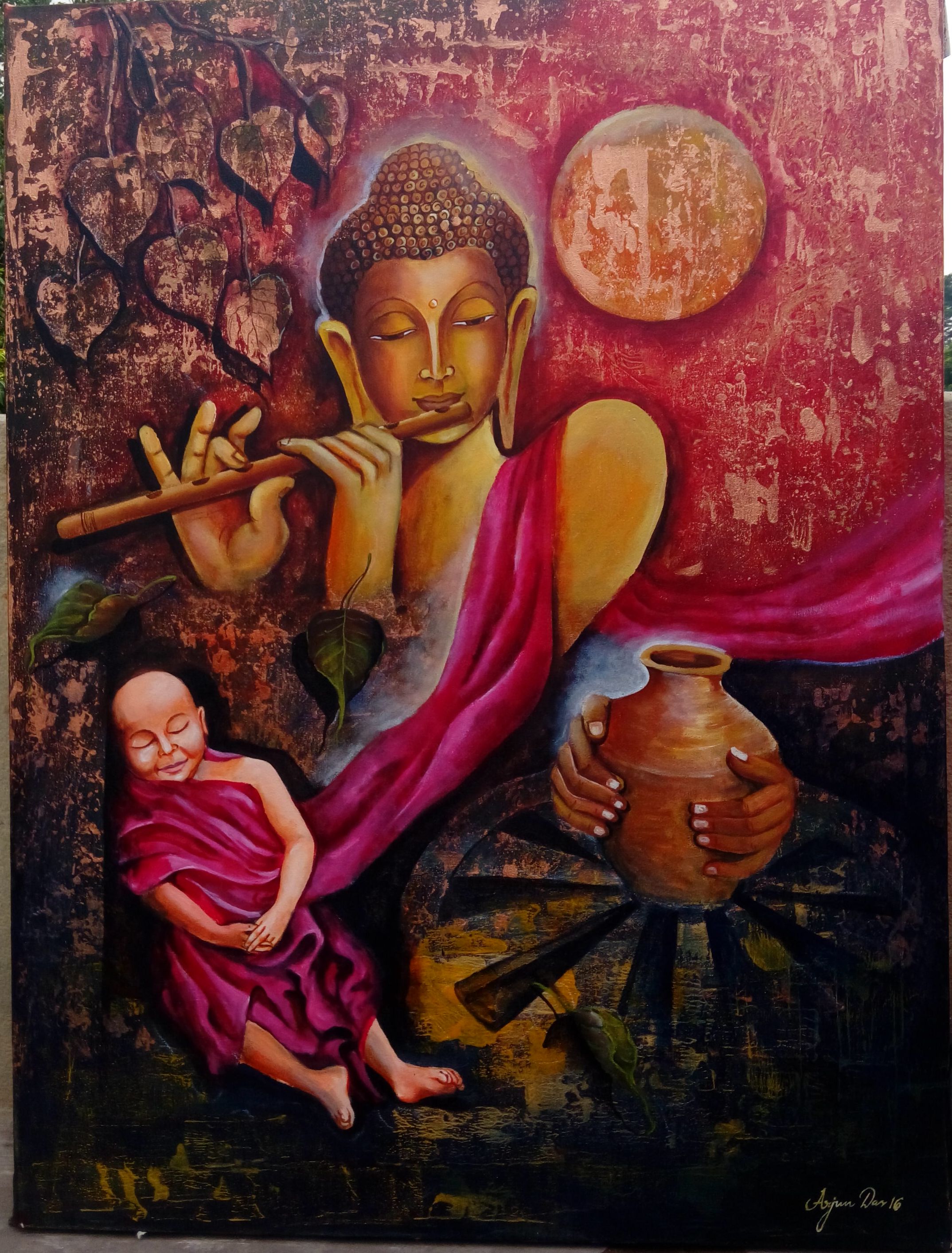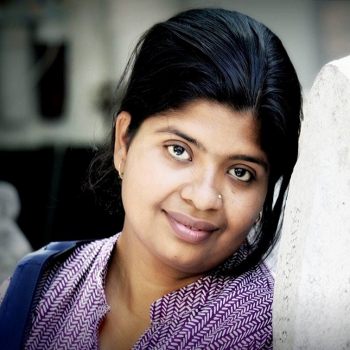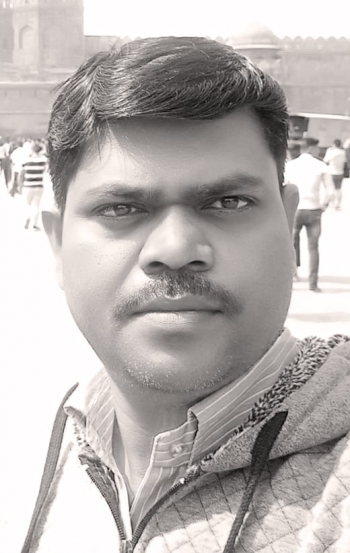
There is no denial to the fact that Art has no religion attached to it. But when Art is discussed in Indian context, it starts taking beautiful religious turns. In Indian context, it can be said that Art is not restricted to a mere mode of expression, but it takes on a higher level where artists and common people choose it as a medium to connect with divine. In this world of contemporary art, there are people who let these paintings to be the focal point of the energies in their room and thus, provide them with an energized personal zone to meditate. The best suited paintings for this purpose are landscape paintings and Buddha paintings.
If you have ever explored the contemporary art section of an online art gallery, you must have come across numerous Buddha paintings. Though we all love to adorn our places with these paintings, not many of us know the origin and significance of these paintings. The aim of this blog is to make our readers familiar with the history behind the origin and evolution of surreal Buddha paintings.
At over 10,000 feet altitude the barren desert plateau of Ladakh is a fascinating crucible of culture. It is bound on the south by the Great Himalayas and on the north by the majestic Karakoram Range. However, in days gone by this was not an isolated place; it was an active crossroads of trade in the ancient world. Leh in Ladakh was on an artery of the Silk Route, which flowed from the distant lands of China to those of Mediterranean Europe. This artery connected the Silk Route through Leh and Srinagar to Amritsar and from there down to Nalasopara in present-day Maharashtra and to Kerela. Along with trade, philosophic ideas and optimistic impulses flew to this crucible in the mountains up from Ajanta and Kerela on the one hand and from the cities of China, Central Asia and those of the Mediterranean on the other hand. A great Buddhist culture was created in this trans-Himalayan plateau. Since very early times, religious teachers from the Pal Kingdom in eastern India and from Kashmir were bringing the ideas of Buddhism to this land. The first great coming of Buddhism which swept across Ladakh onto Tibet, Nepal, Sikkim, Bhutan and Arunachal Pradesh was in the eighth century. The second great coming of Buddhism was when 108 monasteries were made in Ladakh, Western Tibet and Lahaul-Spiti in the early eleventh century. Craftsman and artists from Kashmir were invited to construct and paint these monasteries which were to become the backbone of trance-Himalayan Buddhism. These monasteries are a significant part of the heritage of the world and they reflect one of the most glorious periods of painting in India.
At Ajanta, one can see the most sublime expression of classical painting of ancient India. These paintings had taken Indian art to a great height in the depiction of inner peace and spirituality. Thereafter, we see a marvelous body of paintings which developed in the Pal Kingdom of eastern India. These paintings carried forward the grace and the beauty of human form which was seen the paintings of Ajanta. In the Pal Kingdom, with the development of Vajrayana Buddhism, the meditative qualities and thoughtful expressions of the earlier paintings found a new meaning and form. After the Pal Kingdom, the next great center of Vajrayana Buddhism was Kashmir. It was through here that this form of Buddhism travelled to Ladakh.
Vajrayana Buddhism has Dhyani Buddha, who personifies different aspects of the Buddha’s compassion and wisdom. This philosophy offers a new path towards attaining enlightenment. The worshipper meditates upon images of the deity until he becomes the deity himself. By absorbing the qualities personified in the image, he becomes that every aspect of the Buddha which is presented in the image before him. Thus, paintings are extremely important Vajrayana Buddhist as an essential part of religious practice.
Though, the techniques of creating these paintings have changed over the course of time, but still this form of painting has managed to maintain its spiritual charm. Till this date, people love to adorn their homes, especially worship rooms with these paintings to create a divine aura that will help them mediate. The only difference is that nowadays, they prefer contemporary art paintings, over classical paintings of the Bodhisattva.





















